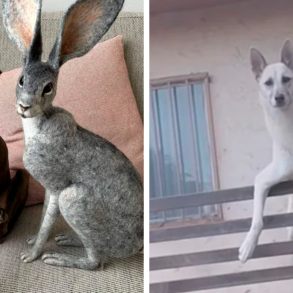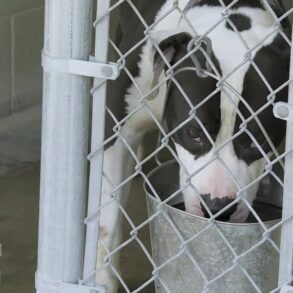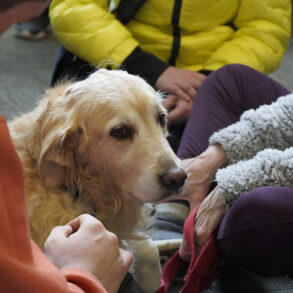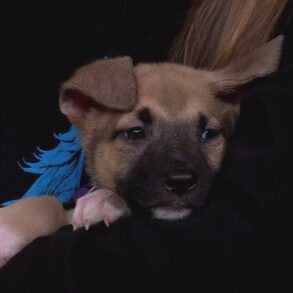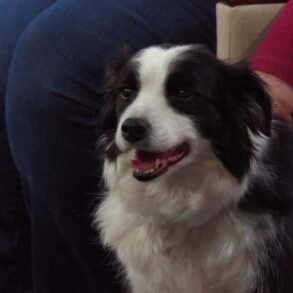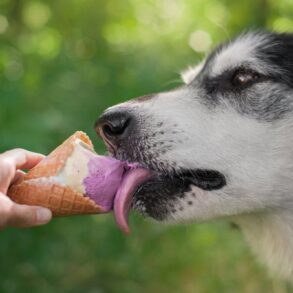A new study published in the scientific journal Biology Letters reveals that working dog breeds, such as Siberian huskies and Rottweilers, possess the smallest brains relative to their body size, challenging previous assumptions about the correlation between brain size and intelligence in mammals.
The research involved measuring 1,682 skulls of adult dogs covering 172 breeds housed at the Natural History Museum Bern in Switzerland. The scientists studied the relative endocranial volume (REV), which reflects brain size relative to overall body size, of these dogs. Surprisingly, they discovered that working breeds, known for their discipline and abilities in assistance, surveillance, and rescue tasks, have the smallest brains relative to their body size, yet they likely possess more developed intellectual abilities.
“In other groups [of species] relative brain size is indicative of higher cognitive abilities — here we see the opposite,” explained Ana Balcarcel, lead author of the study and an evolutionary biologist at the Montpellier Institute of Evolutionary Sciences in France.
“The results are actually counterintuitive and contrary to the patterns we have seen throughout mammalian brain evolution,” she added.
Previous research has suggested that bigger brains tend to correlate with higher survival odds, better decision-making, and higher information processing capacity. However, this does not hold true for dogs. The study found that dog breeds with larger relative brain size—mostly toy breeds like Chihuahuas, Pomeranians, and Yorkshire terriers—tended to show higher levels of fear, aggression, attention-seeking behaviors, and separation anxiety.
Companion breeds, like Chihuahuas bred primarily to be pets, had the largest relative brain size, but their mental abilities do not always correspond to their brain size. The research detailed that small dogs tend to demand more attention and exhibit greater separation anxiety, which could be linked to their brain size in proportion to their body. According to the study, small dogs tend to show higher levels of anxiety, fear, and aggressiveness compared to their larger counterparts.
“It was also observed that small dogs, compared to working dogs, are more prone to exhibit aggression towards other dogs and even towards people,” the study noted. These traits are usually associated with lower intelligence. In contrast, the scientists found that breeds with smaller brains, such as working dogs like Siberian huskies, are actually easier to train and possess good short-term memory.
Relative brain size was smaller in dogs that were more trainable, typically working breeds like Siberian huskies, Great Pyrenees, and Rottweilers. Previous research has shown that working breeds have better executive function—meaning greater behavioral control and short-term memory—than other dog breeds. These qualities are generally considered signs of “smart” dogs.
“The key difference here is that dogs are not in a natural environment. They are a function of artificial selection… a very directed selection, evolution under human hands,” Balcarcel said.
She also explained that “we can say that we have really altered the brains—not just the body sizes and the proportions of different dogs, but it looks like we have also changed their brains in a significant way.”
The study suggests that excessive breeding of dog breeds by humans has led to changes in the natural structure of dogs’ brains. Fear and aggression may not have been as disadvantageous to these breeds as they would have been for working dogs, which have been bred to be more trainable, speculated Balcarcel.
Balcarcel added, “It may simply be a different set of skills and behaviors they possess, but that do not correlate with a larger brain size. In summary, intelligence can and should be measured in different ways, not just by total brain size.” She reminded dog owners that, no matter their dog’s brain-to-body size ratio, the findings don’t necessarily translate directly to the dog’s intelligence. “Dogs have been bred for different cognitive abilities, so even if your dog is on the small-brained end of things, they are special and specialized in their own way,” she said.
The researchers also noted that variation in the shape of the neocortex—a part of the brain responsible for higher-level functions—across dog breeds could shed light on the senses and functions that are important for different types of dogs. Studying brain form in dogs could also answer questions about evolution and domestication. Compared with wild gray wolves, domesticated dogs are more specialized for complex social skills cooperating with humans, such as following humans’ gaze and interpreting human pointing gestures. The brains of domesticated dogs are about 20% smaller than those of wild gray wolves relative to body size.
Sources: Live Science, Infobae, Cursor Info
This article was written in collaboration with generative AI company Alchemiq
This post was originally published on this site be sure to check out more of their content.








